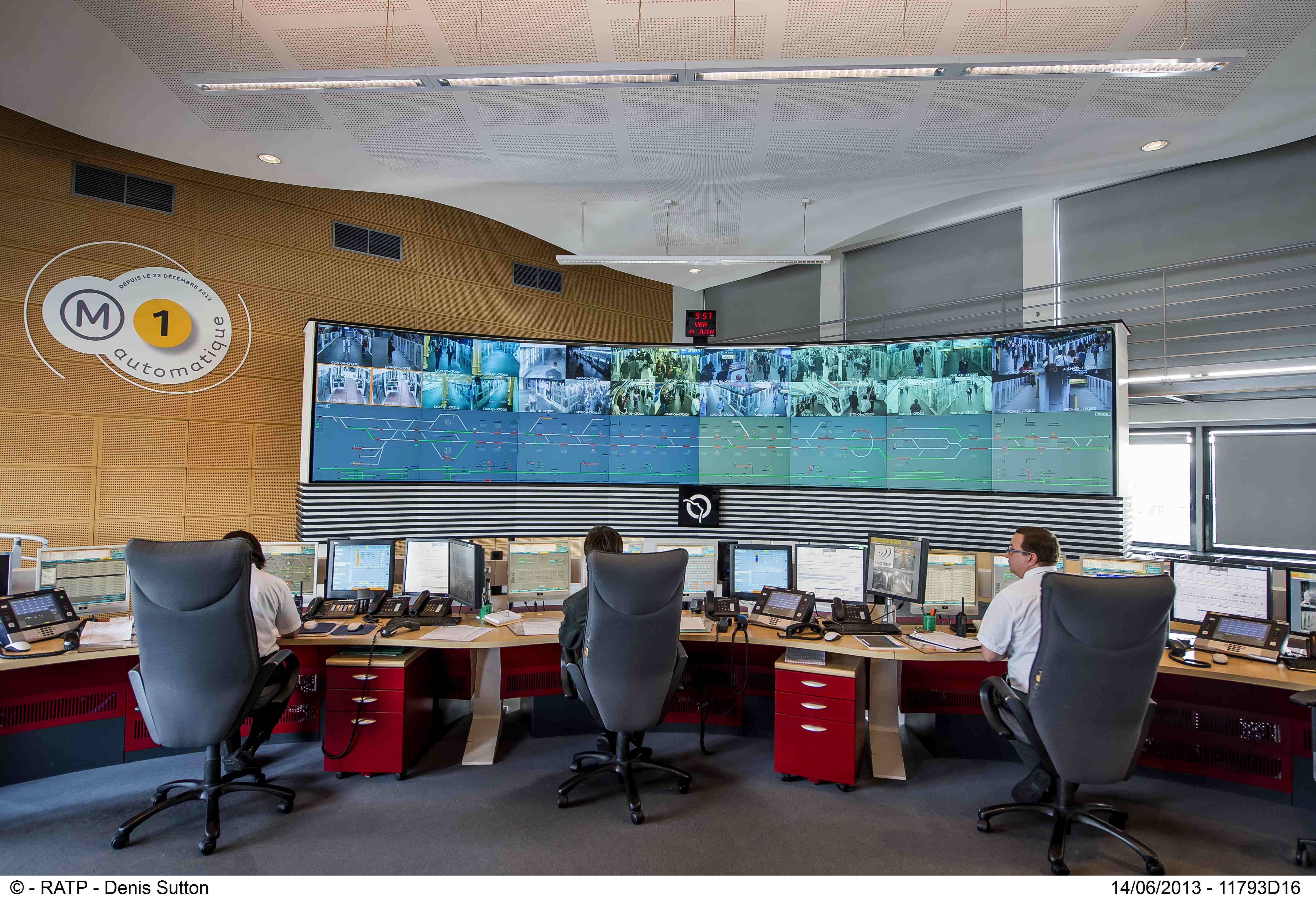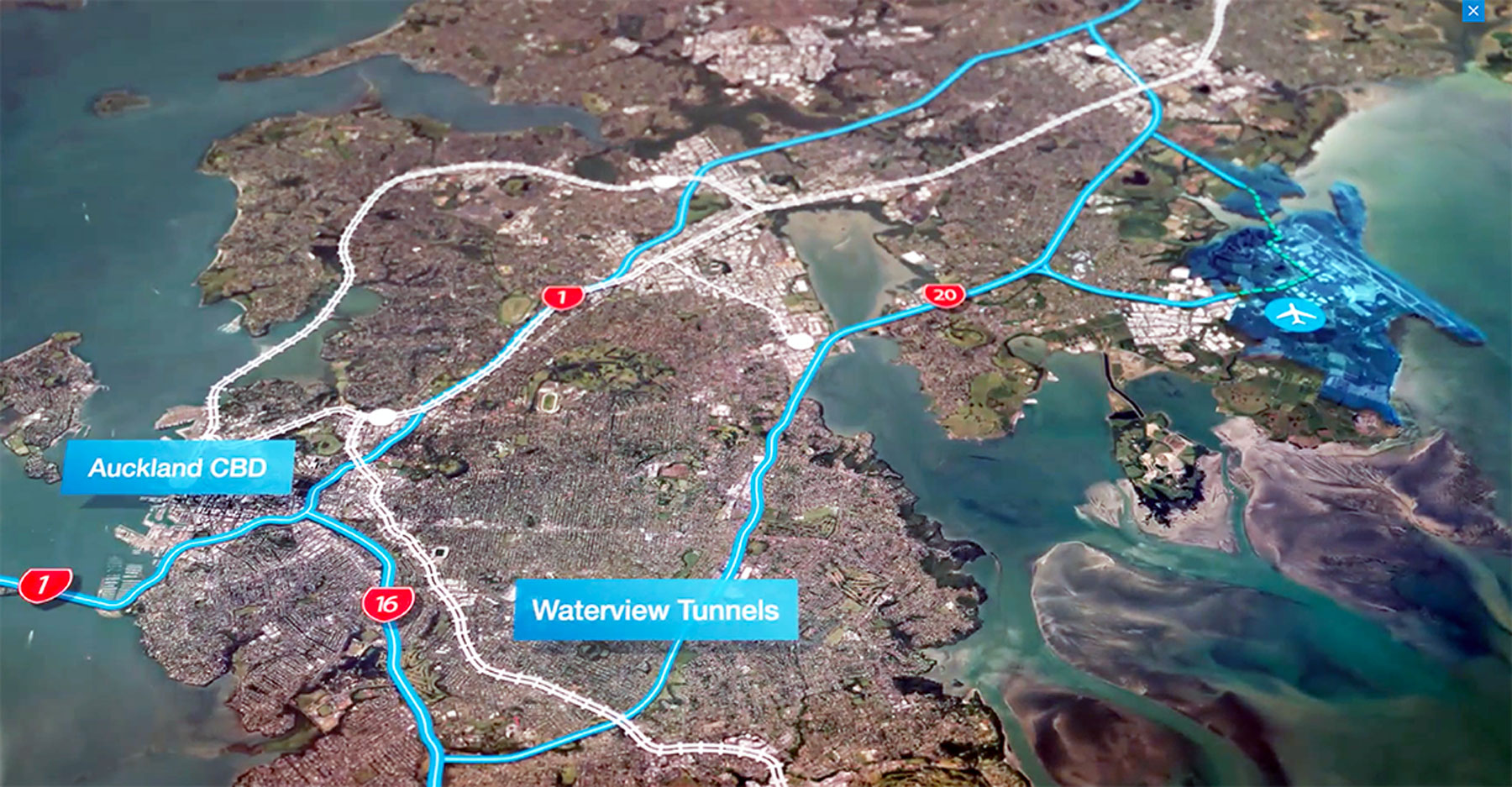
Paris is visited by millions of tourists each year, keen to see for themselves stunning attractions such as the Eiffel Tower, Arc de Triomphe, Notre-Dame, the Louvre, the Seine and all the rest. But while the best-known sites of the City of Light tend to be on the surface, there is a lot going on below those iconic grand boulevards.
The city’s underground Metro creates the unseen arteries of the city. Public transport operator
The growing shift towards driverless trains means operators can increase the number of vehicles on a line to meet public demand. However, the technology itself presents concerns for the travelling public who need reassurance - and technical support on standby for when things go wrong.
Operational control
At the beating heart of Line 1 is the Operational Control Centre (OCC), managed by three supervisors. Its 32 screens can work simultaneously across 600 cameras on the line and the trains, monitoring eight main stations on the line and receiving instantaneous information on passenger flow. A fourth employee is dedicated to answering passenger queries, giving them on-board information and co-ordinating with the whole metro network in case of incident.
“The control room not only deals with incidents but also with the day-to-day operations of the line,” explains Guillaume Bougeard, managing director of Metro Line 1. “They work to put trains in line in order to deliver the traffic predictions of the day. Most of the incidents come from passengers stuck between the doors and trying to re-open the doors that are closing.”
Jour et nuit
An average day on Metro Line 1 in Paris starts with the opening of the line and preparation for the morning rush, which will see 49 trains operating from 07.30 to 09.30. Between peak hours, co-ordination of the cleaning of trains and exchange of rolling stock between the workshop takes place. The same number of trains run during the evening peak hours, between 16.30 and 17.30, which is then followed by an hour-long co-ordination of the cleaning and parking of trains. At night, electric power consignment allows works on the tracks in preparation for re-opening of the line.
“The traffic will keep running with a ten-minute disruption,” Bougeard goes on. “What is incredible with an automatic system is that you are able to put other trains on the line, so it’s a very resilient operation in a few minutes.”
There are seven supervisors ‘in the field’ who can intervene whenever there is an incident or something to fix on a train, plus other station staff to help passengers. “The philosophy of the automation of the line was to bring a better service to our customers,” he goes on. “Not just to think just transport issues, but to bring a better service to our customers and to have better management of the service.”
Remote help
Turnaround time for resolving issues depends on the issue, of course – for example, a passenger with health problems might require help from a paramedic. Most situations can be dealt with remotely – a less dramatic challenge for autonomous lines is providing on-board passenger information. “Passengers know that there is no driver in the train and want precise information for their own situation when an incident occurs,” Bougeard continues. “The person in charge of information in the OCC has to address all these individual expectations.”
He also points out that, since the level of security in operation is way higher on an automatic line than on a classic line, it cannot operate in a ‘degraded’ mode, which means the system has to be resilient. “RATP has worked a lot on the reliability of every piece of equipment in the transport system and has brought out action plans to strengthen the automatic system,” he explains. “This year we will be upgrading the OCC operating software, part of our ever-evolving process of continual upgrade to ensure the centre is at the cutting edge of technology.”
Availability, safety, performance and reliability are among the key user benefits of automation, RATP believes. Passengers are very happy with the results of the automation of the line, Bougeard insists, with better regularity, new trains, renovation of stations - and better service in those stations.
Grand plans
But customer expectation is not static, and passenger volumes show no sign of diminishing in one of Europe’s most popular destinations. As a result, RATP is not resting on its laurels and has grand expansion plans. Currently, for instance, the group is automating Line 4.
“Operation is stable on Line 1,” says Bougeard. “We will gather the control of the stations into an Operation Centre of the Stations, just nearby the OCC in early 2019. Line 4 is scheduled to be finished in 2022 with a mixed operation and that’s a really big challenge for us for the years to come.”
Design chic
RATP Group’s autonomous Metro Line 1 has been designed with the wellbeing of passengers in mind. For example, the platform doors are 1.7m high as part of an intention not to ‘oppress’ the passenger on the platform. “We have the challenge of gaps between the train and the platform,” says Guillaume Bougeard, managing director of Metro Line 1. “For automatic operation, we cannot have the risk of people stuck between the train and platform screen doors when they are closed - so we had to invent systems that could detect that there’s someone stuck between the two before allowing the train to go to the next station.”
The line uses communication-based train control (CBTC) technology: comms between trains and systems is via radio, with Wi-Fi used for video and audio. To prevent hacking, the network is closed.
On the platform, new signage has been installed and the signalling system renewed, with points changed, 700 beacons and 70 radio bases deployed. 220 km of cable was put in place connecting all equipment to allow data to be exchanged to operate the system.
There is also a project to extend the line to the east by 2030. Then will come the automatic new metro lines of Greater Paris. RATP Group is also testing autonomous vehicles for public transport on the surface – a leap that has proved controversial recently in other countries.
In other words, there is clearly still work to do. The OCC is going to be even busier.
Grand plans
But customer expectation is not static, and passenger volumes show no sign of diminishing in one of Europe’s most popular destinations. As a result, RATP is not resting on its laurels and has grand expansion plans. Currently, for instance, the group is automating Line 4.“Operation is stable on Line 1,” says Bougeard. “We will gather the control of the stations into an Operation Centre of the Stations, just nearby the OCC in early 2019. Line 4 is scheduled to be finished in 2022 with a mixed operation and that’s a really big challenge for us for the years to come.”
There is also a project to extend the line to the east by 2030. Then will come the automatic new metro lines of Greater Paris. RATP Group is also testing autonomous vehicles for public transport on the surface – a leap that has proved controversial recently in other countries.
In other words, there is clearly still work to do. The OCC is going to be even busier.











